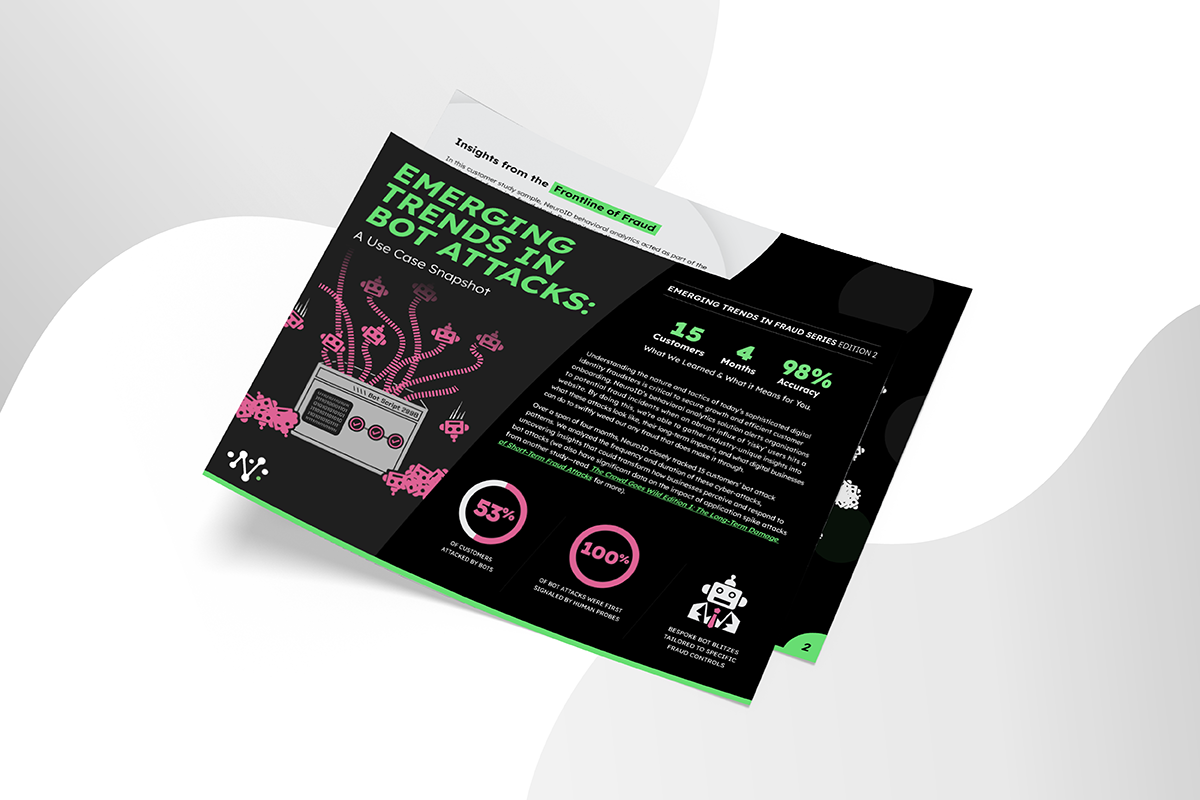
Emerging Trends in Fraud series | Edition 2
Emerging Trends in Bot Attacks: Insights from the Frontline of Fraud
Emerging Trends in Fraud Series (Edition 2)
Over a span of four months, NeuroID closely tracked 15 customers’ bot attack patterns. We analyzed the frequency and duration of these cyber-attacks, uncovering insights that could transform how businesses perceive and respond to bot attacks.
This is the second in our ongoing Emerging Trends in Fraud series of reports, which are focused on understanding the nature and tactics of today’s sophisticated digital identity fraudsters through industry-unique insights into crowd-level applicant behavior. Download the first edition on the revenue-impact of application fraud for more expert analysis from the front-line of fraud.

Download our use case snapshot to learn:

New questions you should be asking about bot attack blitzes: Over a mere four-month period, a staggering 53% of NeuroID customers had an attempted bot attack. What did they look like, where did they come from, and why were they so hard to detect with traditional fraud prevention tools?

Why validation steps are failing to fight bots: In one use case, we saw bots easily thwart a phone verification step that was in place to stop these exact types of attacks. Bots were sophisticated enough to complete the session and bypass all PII-based controls—read the report to learn what finally gave them away.

Key findings from our in-depth analysis: Building from real customers and real bot attack data, we unraveled alarming trends not just in bot attacks but also in onboarding friction. For example, in one scenario we saw how fraud-prevention friction actually led to more bots onboarding than genuine users.
